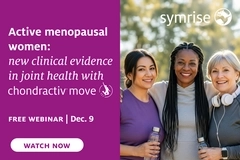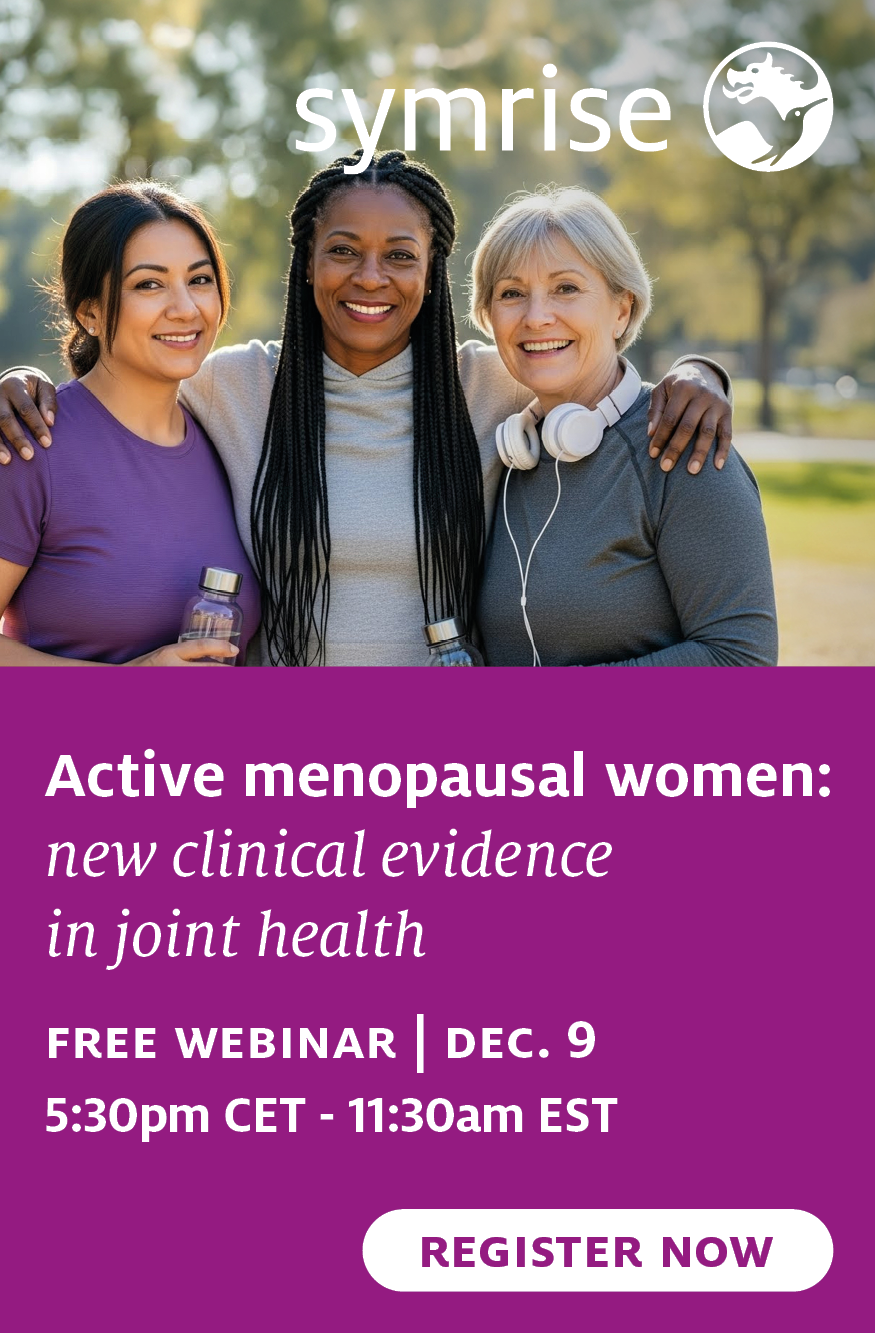Experts call for crackdown as influencers’ nutrition misinformation put millions at risk

Following the nutrition advice of 53 social media “super-spreaders” could put up to 24 million people at risk of serious health consequences, a new study warns. Though they have no health- or nutrition-related qualifications, these influencers sell misinformed practices for profit, including biohacking therapies, medical conferences, and promoting keto, carnivore, or raw milk diets.
Nutrition Insight connects with Alice Millbank, chief scientific officer, and Marlana Malerich, chief development officer, at Rooted Research Collective (RRC) to uncover the growing disinformation trend.
The study by RRC and Freedom Food Alliance calls for policies targeting early nutrition and digital education, investing in trusted nutrition professionals on social media, and strengthening healthcare professionals online with misinformation training and ethical guidelines. It also urges a crackdown on the misuse of medical titles for profit.

According to the authors, 96% of these influencers financially benefit from spreading misinformation, for example, claiming that plant-based diets are harmful and deficient compared to red and organ meats. They also advocate for extremely low-carbohydrate and ketogenic diets while asserting the health benefits of raw or unpasteurized milk.
These influencers run supplement and healthcare businesses and use affiliate links that give them commission for promoting supplements, snacks, or meat-based products. They also offer coaching, courses, ticketed events, and meetups. The study reveals that those with the most prominent followers earn over US$100,000 monthly in addition to their high-earning profession.
Most of these “super-spreaders” are represented by the persona “Doc,” who employs fraudulent credentials, instills fear, and uses alarmist rhetoric against governments, big pharmaceutical companies, anti-seed oil views, and science denial. The study reveals that 87% were not actual medical doctors, although one in five presented themselves as credentialed experts.
Why misinformation wins over science
Millbank explains that nutrition misinformation is becoming more prevalent, and people may look for “super-spreaders” even when science-based nutrition information is available, partly because it addresses their real frustrations.
 Most of these influencers profit from promoting extreme diets, supplements, and unproven therapies.“We live in a fast-paced world marked by strained healthcare services, minimal social support, and a commercialized food environment where convenience foods high in fat, sugar, and salt are cheaper and more aggressively marketed. We’re being nudged toward unhealthy food choices, from supermarket checkouts to vending machines at educational institutions. It’s no surprise that adherence to dietary guidelines remains low.”
Most of these influencers profit from promoting extreme diets, supplements, and unproven therapies.“We live in a fast-paced world marked by strained healthcare services, minimal social support, and a commercialized food environment where convenience foods high in fat, sugar, and salt are cheaper and more aggressively marketed. We’re being nudged toward unhealthy food choices, from supermarket checkouts to vending machines at educational institutions. It’s no surprise that adherence to dietary guidelines remains low.”
Previous researchers have found that many people seek science-backed information but are overwhelmed by the volume and inconsistency in advice. “When public health messaging feels confusing or inaccessible, it creates a vacuum for content that feels more actionable. That’s where nutrition misinformation thrives,” adds Malerich.
“Many super-spreaders are highly skilled at exploiting this confusion. They weave genuine concerns, such as distrust in corporations or frustration with the healthcare system, into emotionally resonant narratives. These often include partial truths, which lend credibility to the more extreme or misleading advice they promote.”
“Rather than reading lengthy National Health Service webpages or navigating dry and technical dietary guidelines, users are drawn to short, visually engaging content that promises ‘life-changing’ hacks,” says Malerich.
According to the experts, the emotionally charged language offering easy solutions paired with motivational personal transformation stories creates a powerful illusion of trust and effectiveness.
“In our study, the ‘Hustlers,’ who specialize in this style of content, achieved the highest average engagement rates (43.5%) across all super-spreader groups, demonstrating how powerfully this type of messaging resonates with audiences. The thinking becomes, ‘if it worked for them, it’ll work for me.’ In that kind of information environment, the most compelling content tends to win, not the most accurate,” explains Millbank.
“This is particularly concerning given that UK adults now spend an average of four hours and 20 minutes online daily, rising to over six hours among 18–24-year-olds. Unless public health communication becomes more engaging and responsive to real-world needs, misinformation will continue to fill the gap.”
 Misinformation thrives because it’s emotionally engaging, visually appealing, and taps into distrust in healthcare and institutions.She adds that online presence includes apps, social media platforms, and internet use, such as browsing, video streaming, messaging, social media, or shopping.
Misinformation thrives because it’s emotionally engaging, visually appealing, and taps into distrust in healthcare and institutions.She adds that online presence includes apps, social media platforms, and internet use, such as browsing, video streaming, messaging, social media, or shopping.
Battle of algorithms
The experts discuss how social media and exposure to algorithm-based feeds have influenced nutrition misinformation and the question of responsibility and censorship. “Our research did not measure the direct impact of algorithm-based feeds, but there is growing consensus in the literature that social media algorithms can exacerbate the spread of nutrition misinformation,” says Malerich.
“These systems are designed to maximize engagement, and content that is emotive or polarizing, such as much of the misinformation we analyzed, is often rewarded with greater visibility. This creates a feedback loop in which misleading content gains disproportionate reach.”
According to Millbank, censorship is a contentious issue, as some research warns that content removal or censorship can backfire by pushing audiences into less regulated spaces or reinforcing distrust in institutions.
“For example, a study published in Nature showed that conservative users suspended from X were more likely to share content from low-quality news sites. Similarly, professor Rasmus Kleis Nielsen of Oxford University has cautioned that overreach by institutions might confirm public suspicions about bias and control in information systems.”
“Fact-checking does show promise in reducing misperceptions, particularly when it’s clear and non-confrontational. On the other hand, studies have also found that fact-checks can lower trust in the media overall, especially when they correct misinformation that aligns with the reader’s beliefs. This is why the Royal Society, among others, recommends reducing the visibility and monetization of harmful content,” Millbank continues.
The experts suggest that algorithms should be designed to prevent misinformation from going viral and limit financial rewards for repeat offenders.
 Experts urge digital education, stronger regulation, and support for credible professionals online to counter this growing threat.Malerich adds: “Ultimately, prevention is better than cure. One of our core recommendations is to start early, with better public health messaging and critical thinking education that helps people recognize and resist misinformation before it takes hold. Social media platforms have a role to play, but so too do governments and the public health community.”
Experts urge digital education, stronger regulation, and support for credible professionals online to counter this growing threat.Malerich adds: “Ultimately, prevention is better than cure. One of our core recommendations is to start early, with better public health messaging and critical thinking education that helps people recognize and resist misinformation before it takes hold. Social media platforms have a role to play, but so too do governments and the public health community.”
Failing systems generate mistrust
Millbank notes a growing general mistrust of nutrition science and healthcare, with a literature review revealing several contributing factors. “One is the global decline in food literacy — the ability not just to make healthy food choices but to understand the broader social, economic, and environmental context of those choices.”
“This decline has coincided with a global ‘nutrition transition,’ where ultra-processed foods high in fat, salt, and sugar have become more widely available and aggressively marketed by large food companies.”
Malerich explains that many people mistrust systems and institutions that have failed to protect their health.
“We observed this clearly in our analysis, particularly among ‘Rebel’ super-spreaders, whose content is fueled by anti-establishment and anti-science rhetoric. These influencers weave misinformation into broader frustrations and real-life challenges, tapping into a sense of betrayal and offering alternative ‘truths’ that appear to make sense of people’s lived experiences.”
“This emotional and ideological framing is a key reason why their messages gain traction, despite being factually misleading,” she adds.
Short- and long-term solutions
The experts recommend several interventions to raise awareness of misinformation and convince those following a diet promoted by “super-spreaders.”
“One potential way to counter nutrition misinformation is to meet it where it spreads: online. Supporting qualified nutrition professionals to use social media more effectively, with tools for engagement and spotting misinformation, could help make evidence-based advice more visible and relatable,” Millbank suggests.
“Rather than just broadcasting information, there’s an opportunity to encourage real-time dialogue and connection.”
The study also highlights the need for medical professionals to be accountable for how they use their credentials in public-facing content.
“When individuals with perceived authority promote extreme or misleading dietary advice for personal gain, it can distort public understanding and erode healthcare trust more broadly,” says Malerich.
“Exploring clearer guidelines or limitations around how medical titles are used for commercial purposes, especially outside of professional settings, could be a valuable step toward reducing harm and protecting the integrity of expert advice.”
In the long term, Malerich and Millbank suggest exploring early interventions where children are trained on nutrition skills, such as healthy cooking on a budget and digital literacy, which can help them navigate online health claims more confidently.













